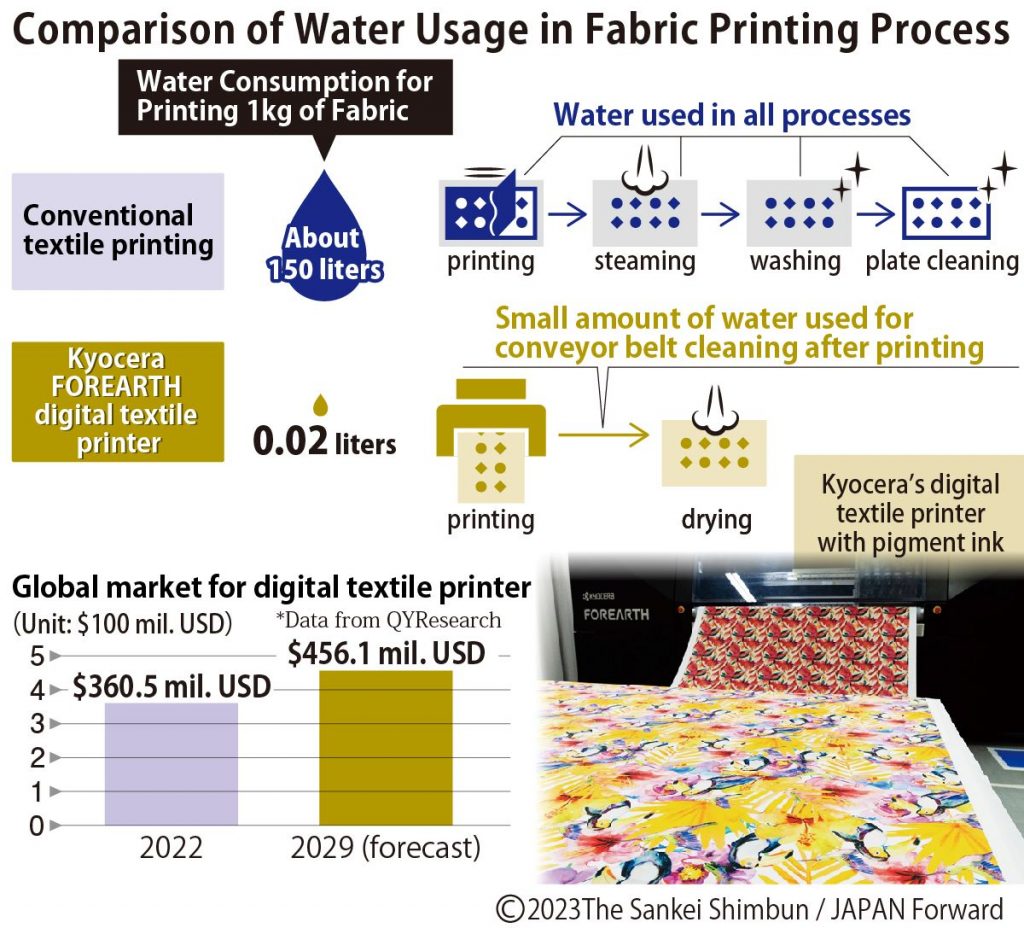
Kyocera’s digital textile printer using pigment ink - Chuo Ward of Osaka City. (©Sankei by Hiroto Kuwajima)
Read the full story on Japan 2 Earth - Can Waterless Digital Textile Printing Clean Up the Fashion Industry?
The emergence of digital textile printing, a technology utilizing inkjet printers to apply patterns to fabric, is gaining popularity in the apparel sector. The fashion industry, often criticized as the world's second most polluting industry, faces substantial challenges in excessive water consumption and massive product waste.
Digital textile printing presents a potential solution. It has made remarkable strides in reducing water usage to less than 1% that of conventional methods. Additionally, it holds the promise of curbing waste through small-batch production. This eco-friendly approach is gaining recognition for its pivotal role in addressing environmental concerns within the industry.
20% of Wastewater Globally
Clothing is an indispensable part of daily life, but the industry has recently come under scrutiny for its considerable environmental impact. According to the United Nations Conference on Trade and Development (UNCTAD), the fashion industry consumes approximately 93 billion cubic meters of water annually. About 20% of industrial wastewater globally stems from dyeing and processing textiles.

Crafting just one pair of jeans demands 7,500 liters of water – equivalent to a seven-year drinking supply for one person. However, it is not just water consumption that is problematic in clothing manufacturing. The widespread adoption of low-priced fast fashion has accelerated the cycle of mass production and consumption.
Continue reading the full story on Japan 2 Earth to learn more about how digital textile printing saves water and reduces waste.
And find more great articles on the environment and the challenges of achieving the SDGs on our new website Japan 2 Earth (J2E), sparking a transition to a sustainable future.
RELATED:
- UNIQLO Debuts Vintage Clothing Pop-Up in Tokyo's Harajuku Fashion District
- [Kimono Style] Sustainable Fashion: A Mother - Daughter Passion for Kimono
(Read the article in Japanese.)
Author: Hiroto Kuwajima







